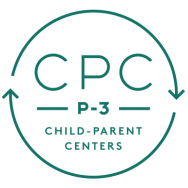The CPC P-3 Model
Because of their demonstrated impact on well-being, early childhood interventions are at the forefront of prevention for improving educational success and health. The goal of the CPC program is to improve early childhood education through family engagement and high quality instruction, making transition to the next grade easier.
CPC P-3 provides students a supportive learning environment that is consistent, stable, and predictable, while it also increases collaboration between school staff, the community, and parents. In the CPC P-3 program, sites implement six core elements:
History
Approximately 1,000 children enrolled in the Child-Parent Centers in Chicago from 1985-1986 became part of the Chicago Longitudinal Study, along with 550 students in a matched control group. The study investigates the long-term educational and social development of low-income, minority children who grew up in high-poverty neighborhoods in central-city Chicago and attended government-funded kindergarten programs in the Chicago Public Schools. Learn more about the study here.
Initially implemented in four sites in Chicago and later expanded to 25, the program originally served families in high-poverty neighborhoods that were not being served by other early childhood programs. The program was substantially revised in 2012 by Arthur Reynolds at the University of Minnesota as a comprehensive school reform model to serve children in a broad variety of geographic and economic contexts.
Under an Investing in Innovation Grant from the U.S. Department of Education, Human Capital Research Collaborative (HCRC) began an expansion of the CPC program in 2012 in four school districts, including St. Paul, Minnesota, and Chicago, Evanston, and Normal in Illinois.
The Midwest CPC Expansion (MCPC) has been a hallmark project of the HCRC, a partnership between the University of Minnesota and the Federal Reserve Bank of Minneapolis to promote effective public policies and programs for young people through multidisciplinary research on human development and learning.
Current CPC sites
Illinois
Chicago Public Schools
Beasley
Burke
Carver/Wheatley
CourtenayDavis
De Diego
Dewey
Edwards
Fiske
Greene (K-3)
Hanson Park
Herzl
Manierre/Ferguson
Melody
Parker
Peck
Tonti
Velma Thomas (PreK only)
Wadsworth
Webster/Hansberry
Evanston/District 65
Dawes
Oakton
Walker
Washington
Normal/ Unit 5
Cedar Ridge
Brigham
Sugarcreek
Minnesota
Saint Paul Public Schools
American Indian Magnet School
Bruce Vento
Jackson
Phalen Lake
Obama
Minneapolis
Phyllis Wheatley
Rochester Head Start
The Place
Rochester Public Schools
Hawthorne
Wisconsin
Madison Public Schools
Allis
